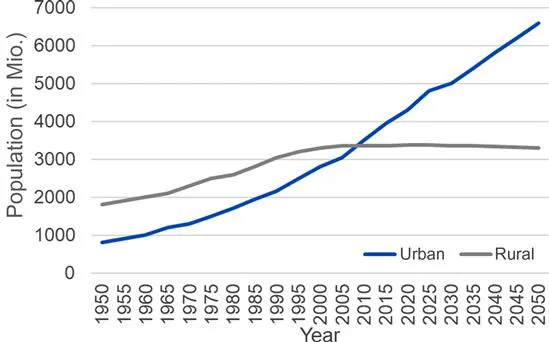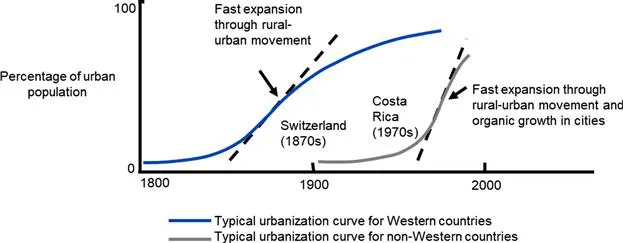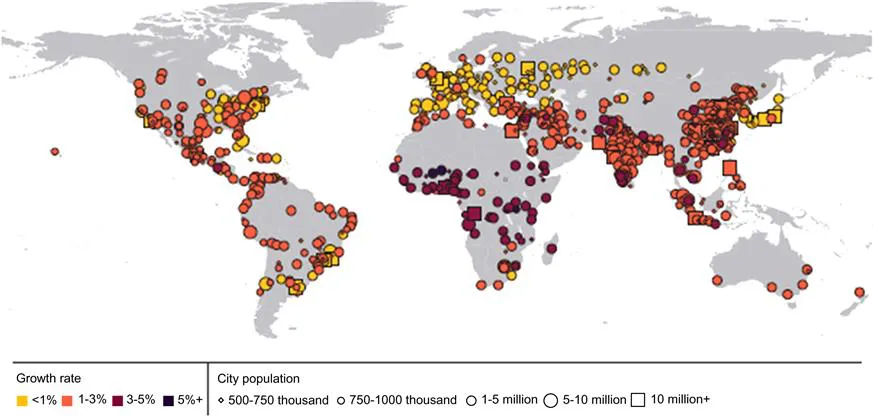
Smart Cities
Introducing Digital Innovation to Cities
Oliver Gassmann, Jonas Böhm, Maximilian Palmié
- 230 páginas
- English
- ePUB (apto para móviles)
- Disponible en iOS y Android
Smart Cities
Introducing Digital Innovation to Cities
Oliver Gassmann, Jonas Böhm, Maximilian Palmié
Información del libro
Transformation through digital innovation is becoming an imperative for every city. The 'Smart City' concept promises to solve the most urgent queries of progressive urbanization in the area of mobility, energy, water supply, security, housing deprivation, and inclusion. Despite the exploitation of existing potential in lighthouse-cities that include Barcelona, London, Munich, Lyon, and Vienna, the less tenacious pursuit of smart city possibilities in the majority of municipalities has resulted in major discrepancies between leading smart cities and those that are less aspirational. Although the necessity of action is frequently recognized, an appropriate path of action remains obscure.
Smart Cities: Introducing Digital Innovation to Cities offers answers, with clarifying examples, to questions that have remained unanswered for many cities. The book identifies and addresses the core elements and potential of smart cities, best practice methods and tools to be implemented, as well as how diverse stakeholders might be effectively integrated.
Based on perennial international research in the field of smart cities, this book brings together the authors' collective experience in practice-based political, administrative, and economic projects to provide a common framework to guide and engage key stakeholders in the transformation and realization of smart cities.
Preguntas frecuentes
Información
CHAPTER 1
THE FUTURE OF CITIES

CITIES AS A MEGATREND
- Worldwide, more individuals are living in cities than in rural areas. In 2014, 54% of the human population resided in cities, whereas in 1950, city dwellers constituted only 30% of the global population.
- In 2040, 65% of the global population will be living in cities.
- Every second two persons move into a city worldwide.
- In 2050, 70% of the global population will be living in cities. Urban societies will consume 80% of total energy, produce 75% of total CO2 emissions, and expend 75% of resources.
- Urban centers possess massive appeal. The three most popular city hashtags on Instagram in 2016 (#NYC, #London, #Paris) were mentioned in more than 180 million tweets.

CURRENT CHALLENGES FOR CITIES
- In San Francisco, 4% of municipal waste is produced by domestic animals, and that percentage continues to grow.
- In Germany, 320,000 coffee-to-go paper cups per day are consumed, leading to 40,000 tons of waste every year.
- The Swiss city of Basel has 31,000 public parking spaces and 69,000 more on private property, whereas the city’s residents have registered only 57,000 automobiles. This is not efficient.
- The average speed of tramways is 15.4 km/h. Subways meanwhile drive at an average speed of 31.3 km/h.
- 80% of buildings in Europe will still exist in 2050.
- Drivers in Frankfurt am Main spend on average 65 hours each year searching for a parking space, resulting in costs amounting to 1,419 euros (Statista, 2017).
- City residents in Germany spend up to 60% of their income on housing (DESTATIS (Federal Statistics Office) 2017).
- Twenty bikes can fit into just one inner-city parking place.
- Chinese rental bikes such as Yobike have flooded German cities. The boomtown Shenzhen illustrates what such developments can lead to. In 2017, hundreds of thousands of rental bikes, which were easily rentable on an app for around two Euros per hour, were stationed in Shenzhen. As a result, traffic was obstructed as the enormous number of bikes blocked main travel routes. In an attempt to alleviate these consequences, rental bikes were heaped on the side roads, leading to the emergence of junk piles several feet high (Mania-Schlegel, 2017).
- In the United States, 26% of individuals between 16 and 34 years of age do not have a driver’s license.
- In Washington, DC, 2,338 bike trips were made using the local bike sharing system during the coldest days of an ice storm in 2013.
- The expected total investment gap for infrastructure in 2030 is 4.7 billion euros (McKinsey Global Institute, 2016).


Challenge 1: Urbanization and Opposing Trends
- Suburbanization processes, in which even more individuals migrate to the surroundings of cities.
- Reurbanization processes, in which ambitious housing development occurs in the city center, accompanied by infrastructure expansion.
- Post-suburbanization processes, in which central services are relocated from the urban core of a city to its outskirts, in response to prior suburbanization processes.
